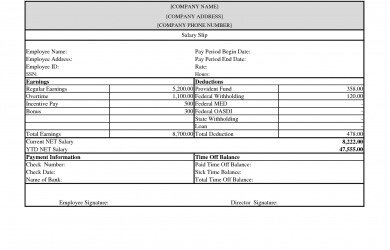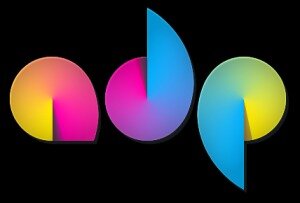Yield to Maturity Definition, Formula & Equation Video & Lesson Transcript

Investors should consider engaging a qualified financial professional to determine a suitable investment strategy. In effect, if coupons were to be reinvested at lower rates than the YTM, the calculated YTM is going to turn out to have been inaccurate, as the return on the bond would have been overstated. Considering yields rise when prices drop (and vice versa), investors can project yield-to-maturity (YTM) on portfolio investments to guide better decision-making. An important distinction between a bond’s YTM and its coupon rate is the YTM fluctuates over time based on the prevailing interest rate environment, whereas the coupon rate is fixed. Some of the more known bond investments include municipal, treasury, corporate, and foreign.
- The bond’s coupon payments are assumed to be reinvested at the same rate as the YTM, which may not be an option in the future given uncertainties regarding the markets.
- The yield to maturity for zero-coupon bonds is also known as the spot rate.
- The complex process of determining yield to maturity means it is often difficult to calculate a precise YTM value.
- Investors should consider engaging a qualified financial professional to determine a suitable investment strategy.
- This is especially true for bonds with longer times to maturity, since you must take into account the present values of reinvented coupon payments at each period, which can quickly become overly complex.
- Given those inputs, the next step is to calculate the semi-annual coupon rate, which we can calculate by dividing the annual coupon rate by two.
The IRS mandates a zero-coupon bondholder owes income tax that has accrued each year, even though the bondholder does not actually receive the cash until maturity. In this way, the time until maturity, the bond’s coupon rate, current price, and the difference between price and face value all are considered. YTM represents the average return of the bond over its remaining lifetime. Calculations apply a single discount rate to future payments, creating a present value that will be about equivalent to the bond’s price.
Thus, yield to maturity includes the coupon rate within its calculation. This formula and the whole calculation process become more complex when calculating reinvested coupon earnings. A coupon rate is the interest rate earned on a bond, and investors have the option to cash out those returns or reinvest. An investor would take the same above formula but add the coupon rate that was reinvested on top of the value of the bond. They would have to do this by using a trial-and-error method again to find the accurate coupon rate when adjusted for reinvestments.
Sales & Investments Calculators
Unlike current yield, YTM accounts for the present value of a bond’s future coupon payments. In other words, it factors in the time value of money, whereas a simple current yield calculation does not. As such, it is often considered a more thorough means of calculating the return from a bond. The current yield of a bond is easily calculated by dividing the coupon payment by the price.
Want a 5% Yield With Very Low Risk? Check Out These 5 Treasury … – TheStreet
Want a 5% Yield With Very Low Risk? Check Out These 5 Treasury ….
Posted: Wed, 05 Jul 2023 07:00:00 GMT [source]
Get instant access to video lessons taught by experienced investment bankers. Learn financial statement modeling, DCF, M&A, LBO, Comps and Excel shortcuts. To get a better understanding of the YTM formula and how it works, let’s look at an example. Kiplinger is part of Future plc, an international media group and leading digital publisher. Jennifer Agee has been editing financial education since 2001, including publications focused on technical analysis, stock and options trading, investing, and personal finance.
Mortgage Calculators
This website is using a security service to protect itself from online attacks. There are several actions that could trigger this block including submitting a certain word or phrase, a SQL command or malformed data. If the yield curve trends upwards, it means that the long-term YTM is greater than the short-term YTM. Now that we know the YTM definition let’s take a look at some examples to understand the YTM equation and its calculation.
In the above example, the scenario is made slightly more realistic by using two coupon payments per year, which is why the YTM is 2.51—slightly above the 2.5% required rate of return in the first examples. If you hold the bond to maturity after buying it in the market and are able to reinvest the coupons at the YTM, the YTM will be the internal rate of return of your bond investment. We have written this article to help you understand the bond YTM meaning, how to calculate it using the bond YTM formula, and the factors that cause the bond YTM to rise and fall. We will also demonstrate some examples to help you calculate the bond yield to maturity formula. Zero-coupon bonds essentially lock the investor into a guaranteed reinvestment rate.
Doug is a Chartered Alternative Investment Analyst who spent more than 20 years as a derivatives market maker and asset manager before “reincarnating” as a financial media professional a decade ago. In such a situation, even a negative bond YTM is still better than storing cash since hyperinflation might happen. This situation normally happens when inflation is out of control and the market is unstable. Now that we know the YTM definition, let’s look at some examples to understand how to find the YTM of a bond. For the following problems, you will be advising Sam, who has a bond with face value $150 at 6.5% interest and a 20-year maturity.
Yield to Maturity of Bonds
The rate that normalizes this difference is the yield to maturity. The pricing of a bond is therefore critically dependent on the difference between the coupon rate, which is a known figure, and the required rate, which is inferred. The long-term bond was set to mature 15 years from the date it was issued. Well, lucky for Sarah, there is a way to see if the bond is worth hanging on to. The yield is usually quoted without making any allowance for tax paid by the investor on the return, and is then known as «gross redemption yield». It also does not make any allowance for the dealing costs incurred by the purchaser (or seller).
When the bond matures, the investor receives $1,000, the par value, which is considerably less than the $1,250 purchase price. A price below 100% is considered a discount, and a price above 100% is considered a premium. Interest payments to the investor are based on the “coupon rate” and par value.
What’s the Difference Between Current Yield and Yield to Maturity?
Because this formula is based on the purchase price rather than the par value of a bond, it more accurately reflects the profitability of a bond, relative to other bonds on the market. The current yield calculation helps investors drill down on bonds that generate the greatest returns on investment each year. Yield to maturity is the rate of return expected on a bond if it is held until its maturity date. The concept is used by investors to evaluate the returns on different bond investments that may have a range of maturities and different coupon amounts.
- Even for bonds consisting of different maturities and coupon rates, the YTM enables comparisons to be made since the YTM is expressed as an annualized rate regardless of the bond’s years to maturity.
- You’ll know how much interest you’ll receive from the beginning, but you can also profit from price moves on the secondary market.
- He currently researches and teaches economic sociology and the social studies of finance at the Hebrew University in Jerusalem.
- This gives you the actual interest rate or yield the bond is earning.
At face value, when the bond is first issued, the coupon rate and the yield are usually exactly the same. The yield to maturity (YTM), as mentioned earlier, is the annualized return on a debt instrument based on the total payments received from the date of initial purchase until the maturation date. Even for bonds consisting of different maturities and coupon rates, the YTM enables comparisons to be made since the YTM is expressed as an annualized rate regardless of the bond’s years to maturity. The complex process of determining yield to maturity means it is often difficult to calculate a precise YTM value. Instead, one can approximate YTM by using a bond yield table, financial calculator, or online YTM calculator.
Since a zero-coupon bond does not have this risk, the YTM will differ accordingly. Sarah can calculate what is known as yield to maturity (YTM) for the bond. Yield to maturity, also known as book yield or redemption yield, is the approximate interest rate that a fixed-interest investment will return based best practices for your internal communication strategy on its current price. Fixed-interest investments are investments that have an interest rate that does not change over the life of the security. The calculation for yield to maturity assumes that each year all interest earned on the bond will be kept or compounded so it is paid out once the bond matures.

No matter what price the bond trades for, the interest payments will always be $20 per year. For example, if interest rates go up, driving the price of IBM’s bond down to $980, the 2% coupon on the bond will remain unchanged. The yield-to-maturity calculator (YTM calculator) is a handy tool for finding the rate of return that an investor can expect on a bond. As this metric is one of the most significant factors that can impact the bond price, it is essential for an investor to fully understand the YTM definition.
Therefore, the current yield of the bond is (5% coupon x $100 par value) / $95 market price. Yield to maturity is the rate of return of the entire bond cash flow, including the return of principal at the end of the bond term. Yield to maturity is a way to compare bonds with different market prices, coupon rates, and maturities.
It is difficult to calculate a precise YTM, but you can approximate its value by using a bond yield table or one of the many online calculators for YTM. When a bond’s market price is above par, which is known as a premium bond, its current yield and YTM are lower than its coupon rate. Conversely, when a bond sells for less than par, which is known as a discount bond, its current yield and YTM are higher than the coupon rate. Only on occasions when a bond sells for its exact par value are all three rates identical. It’s important to understand that the formula above is only useful for an approximated YTM. In order to calculate the true YTM, an analyst or investor must use the trial and error method.

Suppose the coupon rate on a $100 bond is 5%, meaning the bond pays $5 per year, and the required rate—given the risk of the bond—is 5%. Because these two figures are identical, the bond will be priced at par, or $100. Yield to maturity is generally the measure most investors use to compare bonds. That’s because yield to maturity gives investors a better picture of overall returns, the impact of compound interest, and reinvestment risk. If you invest in a bond, you are entitled to collect a fixed set of cash payments until the bond matures. The payments you receive can be seen as regular interest earnings, or coupon payments.

Comments closed
No comments. Leave first!